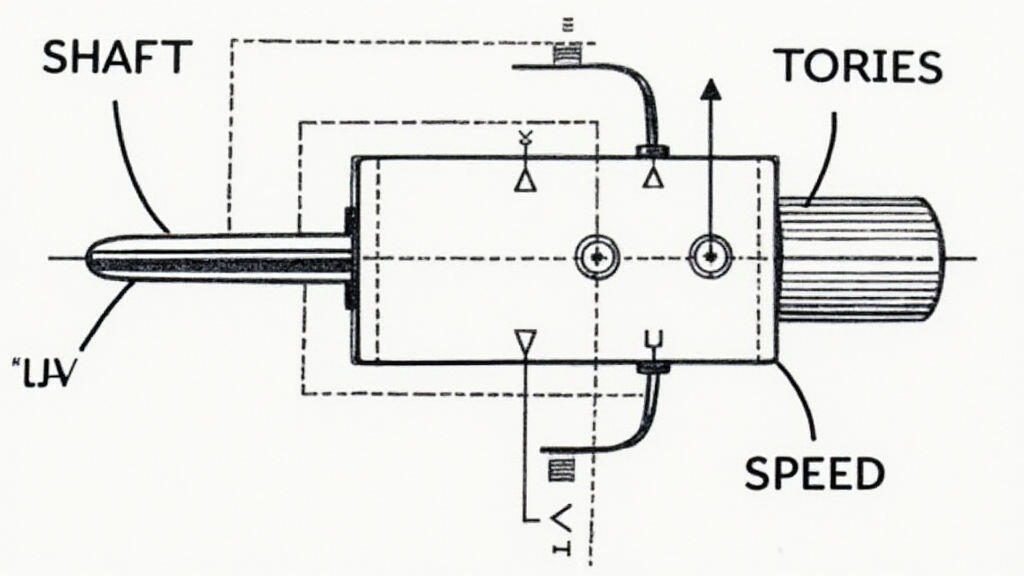
Modern medical equipment—from MRI scanners to laparoscopic robots—depends on high‑performance gear motors to deliver precise motion, low vibration, and long life. Yet many technicians and engineers overlook a crucial factor: how they describe and evaluate these motors in English. Good terminology, clear labels, and a shared understanding of key parameters can dramatically accelerate procurement, reduce costly side‑effects, and improve patient safety. Below we break down the most important English terms and concepts that drive gear motor selection for medical devices, and explain why mastering this language is as vital as the hardware itself.
The first step in a gear motor’s life cycle is defining its functionality—the work it will perform. In the medical field, typical requirements include:
| Function | Example | Key English Terms | |----------|--------|------------------| | Precise Positioning | A robotic arm that controls a surgical needle | Accuracy, resolution, stroke length | | Continuous Duty | Ventilator pump that cycles 10,000 times per hour | Duty cycle, thermal run‑time | | Low Vibration | Ultrasound probe that shouldn’t disturb sensitive tissues | Vibration frequency, noise level (dB) | | Miniaturization | Implanted drug delivery device | Size, compactness, mounting footprint |
Using the right vocabulary helps procurement engineers compare product data sheets, check regulatory compliance, and train staff efficiently.
Once the function is clear, the real selection hinges on mechanical specs. Medical gear motors often come in brushed DC, brushless DC (BLDC), or servo configurations. The English descriptors that gain most traction in the industry are:
When engineers describe a gear motor in documentation, they often use phrases like “100 % efficient” or “max torque at 0.5 rad/s”. These terms reduce ambiguity compared to the bare numbers.
Medical devices normally operate in harsh, regulated environments. Describing these constraints in English is essential:
Clear, standardized language allows regulatory teams to verify compliance quickly.
A motor that consumes 5 % more power may appear cheaper at purchase but can cost far more in energy bills and maintenance over 5 years. Important English terms in cost analysis include:
Describing how efficiency improves TCO helps decision makers justify higher upfront prices for better gear motors.
A mid‑size hospital upgraded its ultrasound system from a brushed DC gear motor to a brushless DC (BLDC) version. In English, the project managers highlighted the transition as:
The result: a 12 % drop in annual energy cost and a 5 % rise in patient throughput per technician. This real‑world example demonstrates that clear, quantified English descriptors make the financial benefits tangible.

Proper documentation not only speeds procurement but also ensures that installation teams can assemble the motor correctly without guesswork.
Artificial intelligence is beginning to play a role in selecting optimal gear motors. By feeding smart algorithms with data shaped by standardized English descriptors—efficiency %, MTBF, torque ripple—system designers can automatically match motors to medical applications, saving weeks of manual research. This development underscores the ongoing value of clear terminology: AI systems interpret human language to make technical decisions.
Efficient gear motors are the unseen workhorses behind today’s high‑precision medical equipment. Yet the language used to describe them can be a bottleneck—or a bridge. By consistently employing clear English terms for functionality, mechanical specs, environmental constraints, and economic metrics, engineers, procurement specialists, and regulatory teams can collaborate more effectively. The result is faster selection cycles, lower life‑cycle costs, and ultimately safer, more reliable medical devices.
As AI tools and regulatory frameworks evolve, the importance of a shared, high‑quality vocabulary will only grow. Investing time in mastering this language today is the key to unlocking tomorrow’s medical innovations.
Leave A Reply
Your email address will not be published. Required fiels are marked